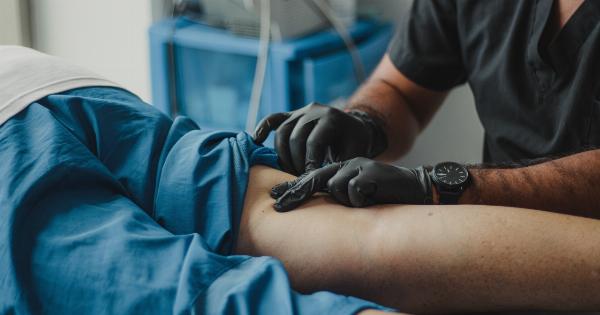Women engage in various activities throughout their lives, from sports to household chores and everything in between. Unfortunately, with physical activities come the risk of injuries.
It is important to understand the types of injuries that are most common among women so that they can be prevented or treated effectively. In this article, we will explore the most frequent injuries that women encounter.
1. Sprained Ankle
One of the most common injuries amongst women is a sprained ankle. This occurs when the ligaments in the ankle are stretched or torn due to sudden twisting or rolling of the foot.
Ankle sprains can result from activities like running, walking on uneven surfaces, or wearing inappropriate footwear.
2. Stress Fractures
Stress fractures are tiny cracks in the bones, often caused by repeated impact or overuse of a specific area. Women who participate in high-intensity exercises such as running or dancing are more susceptible to these types of injuries.
Stress fractures commonly occur in the foot or lower leg.
3. ACL Tears
ACL (anterior cruciate ligament) tears are prevalent in sports involving sudden changes in direction or abrupt stops, such as basketball, soccer, and skiing.
Women have a higher risk of ACL tears compared to men, primarily due to anatomical differences and hormonal factors. A torn ACL often requires surgery and extensive rehabilitation.
4. Tennis Elbow
Tennis elbow, also known as lateral epicondylitis, occurs as a result of repetitive motions of the arm and wrist. It commonly affects women who engage in activities like tennis, golf, or racket sports.
The repetitive stress on the tendons of the forearm leads to inflammation and pain on the outer side of the elbow.
5. Runner’s Knee
Runner’s knee, medically referred to as patellofemoral pain syndrome, is a common condition among women who engage in running or any repetitive knee bending activities. It causes pain and inflammation around the kneecap.
Weak muscles, misalignment of the kneecap, or a sudden increase in activity levels can contribute to this injury.
6. Shin Splints
Shin splints are common among women who engage in activities involving running or jumping. This condition refers to pain along the shinbone (tibia), typically caused by overloading the muscles, tendons, and bone tissue in the lower leg.
Improper footwear, running on hard surfaces, or sudden increases in exercise intensity can contribute to shin splints.
7. Wrist Fractures
Women are more prone to wrist fractures, particularly during activities such as falling or landing on an outstretched hand. Osteoporosis, a condition characterized by weakened bones, adds to this vulnerability.
Fractures in the wrist can significantly impact daily activities and may require immobilization or surgical intervention.
8. Concussions
Concussions are brain injuries that can occur due to a blow or jolt to the head. Women participating in contact sports, such as soccer or basketball, are at risk.
Symptoms of a concussion may include headache, dizziness, confusion, and sensitivity to light or noise. It is crucial to seek medical attention if a concussion is suspected.
9. Back Strain
Women often experience back strains due to repetitive movements, improper lifting techniques, or poor posture. Back strains can result in muscle spasms, pain, and limited mobility.
Engaging in exercises that focus on strengthening the core muscles can help prevent back injuries and improve overall posture.
10. Shoulder Dislocation
Shoulder dislocations occur when the upper arm bone pops out of the socket in the shoulder joint.
Women who participate in activities involving overhead movements or sudden impacts, such as swimming, volleyball, or gymnastics, have a higher likelihood of experiencing shoulder dislocations. Immobilization, physical therapy, or surgery may be necessary to treat this injury.





























